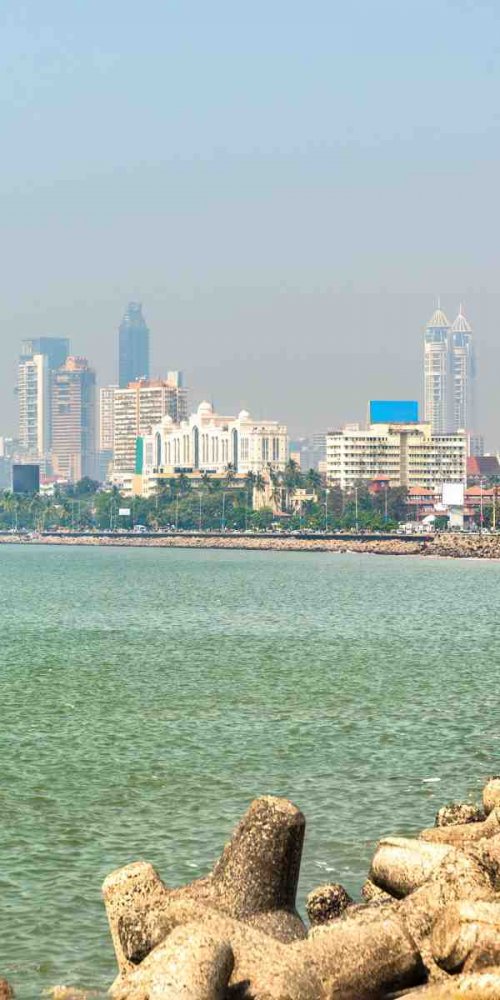

Imagine stepping into the heart of Mumbai, where the rhythmic beep of ticket barriers punctuates the morning rush, tram bells chime melodiously through narrow alleys, and the hum of conversations in upwards of six languages forms a dynamic soundtrack. The air carries a mix of sweet jasmine and spicy street food aromas, while fleets of colourful BEST buses weave through throngs of eager commuters. As you navigate platforms teeming with life and excitement, the city's pulse is unmistakable - vibrant, chaotic, and warmly inviting. This is public transport in Mumbai, IN: a sensory kaleidoscope where every journey promises a new discovery.

Choosing public transport in Mumbai, IN is not just cost-effective, it’s often the fastest way to slice through the city's famously congested roads. When I first climbed the cathedral tower near CST, watching interminable traffic made me realise how unreliable taxis can be during peak hours. The local metro system, buses, and ferries offer a timely alternative, whisking you past snarled streets and delivering you to every corner on time.
Beyond speed and price, there’s a green angle. Mumbai’s metro and electric trams dramatically cut down emissions compared to private vehicles or rickshaws. Given the city’s quest to improve its air quality and fight climate change, hopping on public transit makes you part of the solution - and a more responsible traveller.
Finally, public transport offers an authentic pulse of Mumbai. Each mode buzzes with local stories, cultural intersections, and snippets of daily life. Sitting on a ferry crossing Mumbai Harbour, you’ll glimpse the city’s iconic skyline in a way no taxi ride can offer. And that’s priceless.
The city's public transport network blends historic charm with modern efficiency. Take a glance below to compare the key modes you'll encounter.
| Mode | Lines | Peak Frequency | Night Service |
|---|---|---|---|
| Metro Mumbai, IN | 3 (Line 1, 2A, 7) | Every 4–6 minutes | No (up to 11:45 PM) |
| Tram routes Mumbai, IN | 2 main routes in heritage zones | Every 15 minutes | No |
| BEST Bus | 180+ routes | Every 5–10 minutes | Limited night buses on key routes |
| Ferry | 5 cross-harbour routes | Every 20 minutes | No |
| Bike-share | 30 docking stations citywide | Self-service | 24/7 |
Mumbai’s layered system offers flexibility for locals and visitors alike. The metro delivers rapid north–south connectivity, trams charm in historical precincts like Colaba, and buses cover suburbs and lanes unreachable by rail. Ferries provide scenic harbour crossings, ideal for avoiding city gridlocks. Combined, these modes empower you to tailor your transport choices depending on time, budget and experience preferences.
Morning and evening rush hours are intense. The metro Mumbai, IN, fills up quickly between 8–10 AM and 6–8 PM, with bustling platforms and packed carriages. Best to avoid last-minute ticket purchases during these hours, as queues form fast. If you must travel peak, buy your pass or card ahead via apps to save time.
Off-peak travel, typically mid-morning and late evening, offers a more comfortable experience and cheaper fares on select bus routes. Trams and ferries tend not to change schedules seasonally but appreciate less crowding during off-peak periods.
Local advice: Try early morning rides to catch Mumbai waking up - the cool air and vibrant street scenes are rewarding. Evening peaks are hectic, so consider shifting your itinerary or taking alternate ferry routes for a scenic detour.
Some transport passes offer steep discounts or cap fares lower during off-peak, so keep an eye on apps for real-time pricing updates.

Most metro stations are wheelchair-accessible, with elevators and ramps. Trams have limited wheelchair facilities; call ahead or avoid during busy times for ease. Buses vary widely; newer ones tend to offer low-floor entry.
Prams can be manoeuvred within metro carriages and buses, though space is tight at peak. Secure prams carefully on ferries. Avoid rush-hour travel with little children if possible for comfort.
Luggage allowance on metro Mumbai, IN is generous, but large suitcases can be cumbersome during peak. BEST buses have limited overhead space. Ferries allow bags but watch for movement when boarding.
A: Not yet. Most transport modes have separate ticketing systems, but contactless cards and certain passes offer bundled payments for convenience.
A: Trams serve niche heritage corridors and offer a charming experience rather than fast transport. For quick trips, bus or metro are recommended.
A: Cards can be topped up at stations, select stores, and via apps. Mumbai Metro’s 'Mobility Card' is widely accepted and integrates with BEST buses.
A: Metro trains and stations are well-patrolled and generally safe until close. Night bus services are limited; take cabs for late journeys after 11 PM.
Public transport in Mumbai, IN offers an exhilarating, affordable, and authentic way to explore this sprawling metropolis. Whether zipping by metro, catching a scenic ferry, or charming along historic tram routes, every journey unfolds new stories and smiles. I’d love to hear your adventures or questions below – let’s share tips and tales! Don’t forget to sign up for my newsletter for fresh updates on how to get around Mumbai, IN and other cities worldwide.

Additional articles from our network with useful insights about Mumbai.